Key Takeaways
- Interior designs directly influence customer perceptions in hospitality spaces, and leveraging trends like biophilic design and local storytelling can boost engagement.
- Branding through interior design is essential for creating immersive guest experiences and building emotional connections.
- Flexible, art-forward solutions like rotating wall art or regional photography can modernize spaces with minimal disruption.
Attracting New Customers with Interior Design Trends
When guests step into a hotel lobby, hospital, or senior living facility, their first impression is shaped long before any interaction with staff. The ambiance, mood, and details of a space all contribute to how visitors feel and whether they return. In hospitality, interior design is more than aesthetics; it’s a strategy. Staying current with new interior design trends can strengthen brand identity and directly influence guest perception, loyalty, and referrals.
Here’s a look at recent interior design trends for 2025 that are redefining commercial spaces and how you can use them to captivate customers and clients alike.
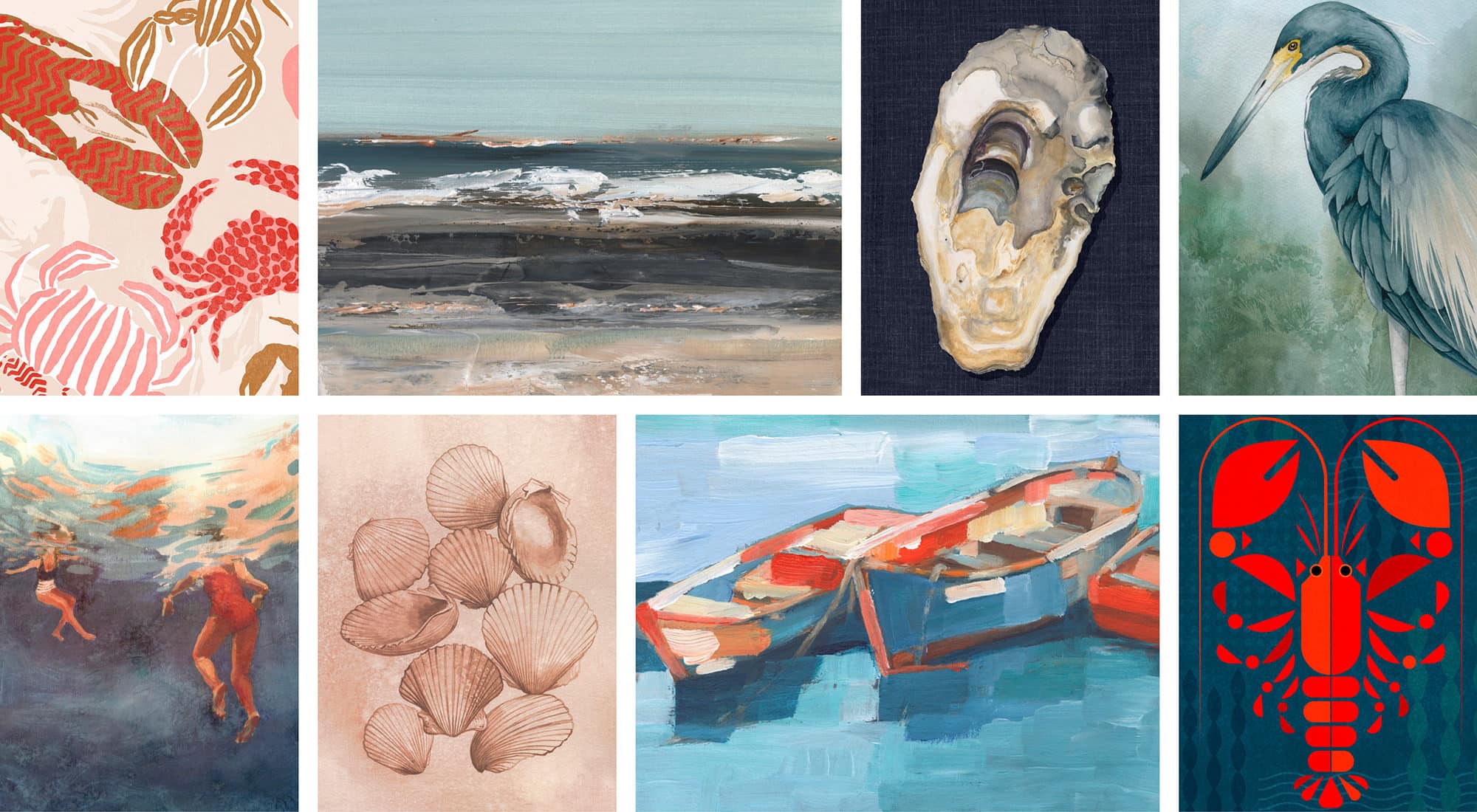
1. Local Influence and Regional Identity
More than ever, guests, brands, designers, developers, and restaurateurs seek unique, localized experiences. Hospitality leaders are responding with interiors that reflect unique decorating ideas tied to place. These leaders in hospitality are celebrating local identity through locally sourced art, traditional design motifs, or partnerships with area artisans.
Instead of sterile corporate styling, this community-focused approach fosters emotional connections and a sense of belonging, creating authentic experiences that will encourage social media sharing, turning your space into a story guests want to tell.
A limited-edition lifestyle art collection based on local scenery or culture can instantly elevate a property’s perceived uniqueness.
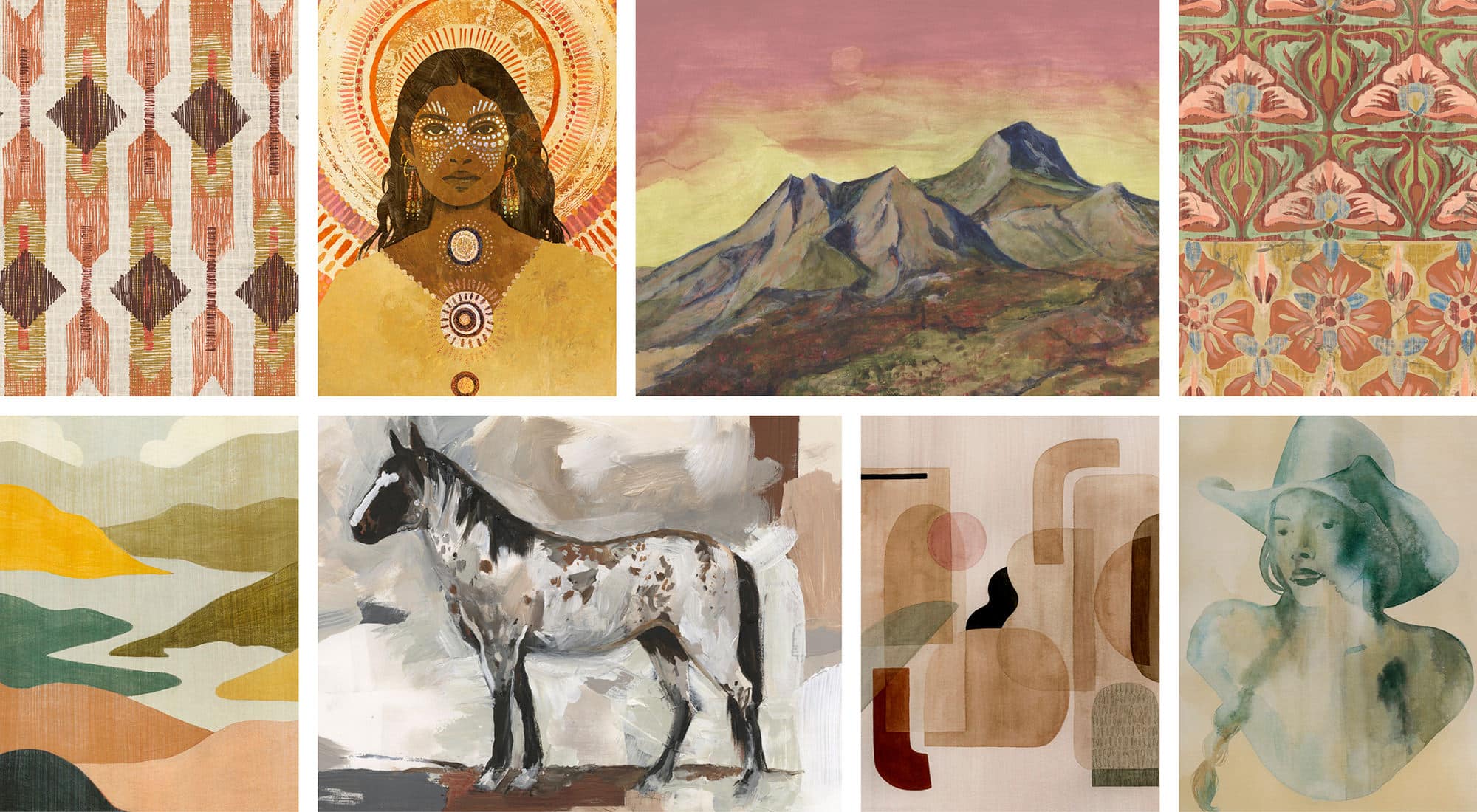
2. Designing for Storytelling and Brand Identity
Storytelling through space dominates modern interior design trends—it’s one of the most powerful techniques to elevate guest experiences. Hotels, hospitals, and wellness centers no longer favor generic styles; they curate interiors that reflect their story, culture, and values.
This means integrating custom artwork, photography, and color palettes that reflect regional influences, brand ethos, or even guest demographics. Whether you want to convey luxury, serenity, adventure, or inclusivity, every design choice should reinforce that message.
Commissioned photography or themed wall art collections add a personalized layer to your interiors without needing full-scale renovation.
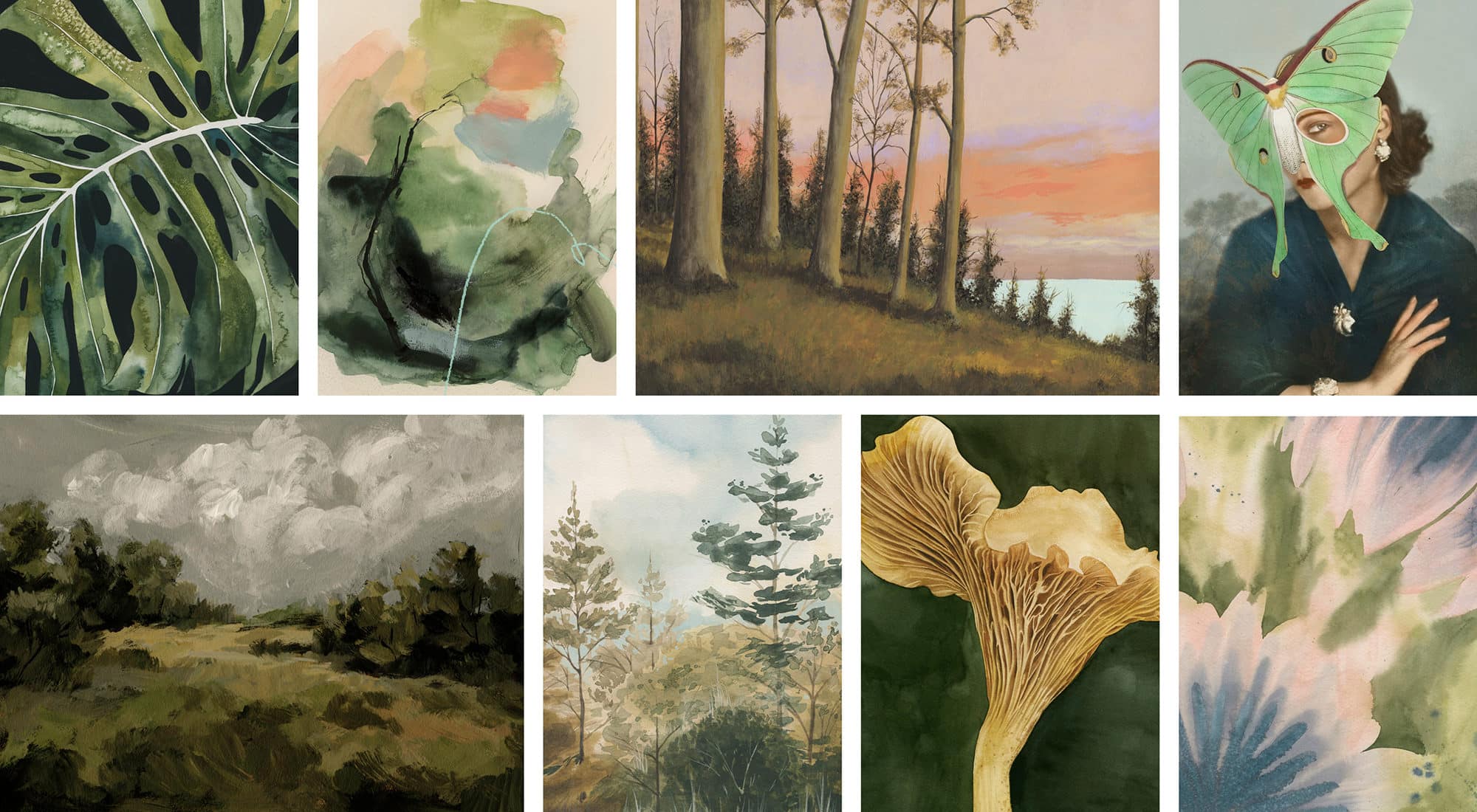
3. Biophilic Design and Natural Textures
Biophilic design—bringing nature into interior design—continues to evolve in modern interior decorating ideas. From live plants and green walls to nature-inspired artwork and organic textures, designers use biophilia to improve well-being and emotional response.
In 2025 and beyond, expect more tactile, natural surfaces: stone finishes, reclaimed wood, and even sustainable fabrics that evoke calm and a homesteading connection. Beyond its unique aesthetics, durability, and sustainable qualities, lived-in wood, stone finishes, and other materials found in biophilic design have one special factor that sets them apart: their character, something you cannot find in modern pieces. These materials emphasize originality, rejecting the mass-produced products you find saturating the marketplace and offering instead a type of reprieve and a return to nature.
This type of interior design, combining natural light, indoor greenery, organic materials, water features, and organic shapes and patterns, isn’t just for spas and wellness centers. Hotels and lounges are leveraging their natural look as well to make environments feel relaxed and one of a kind, offering a rest from the ever-growing presence of digital life.
This type of art, featuring botanicals, natural landscapes, or earth-tone abstract art forms, can enhance a biophilic design without maintenance costs.
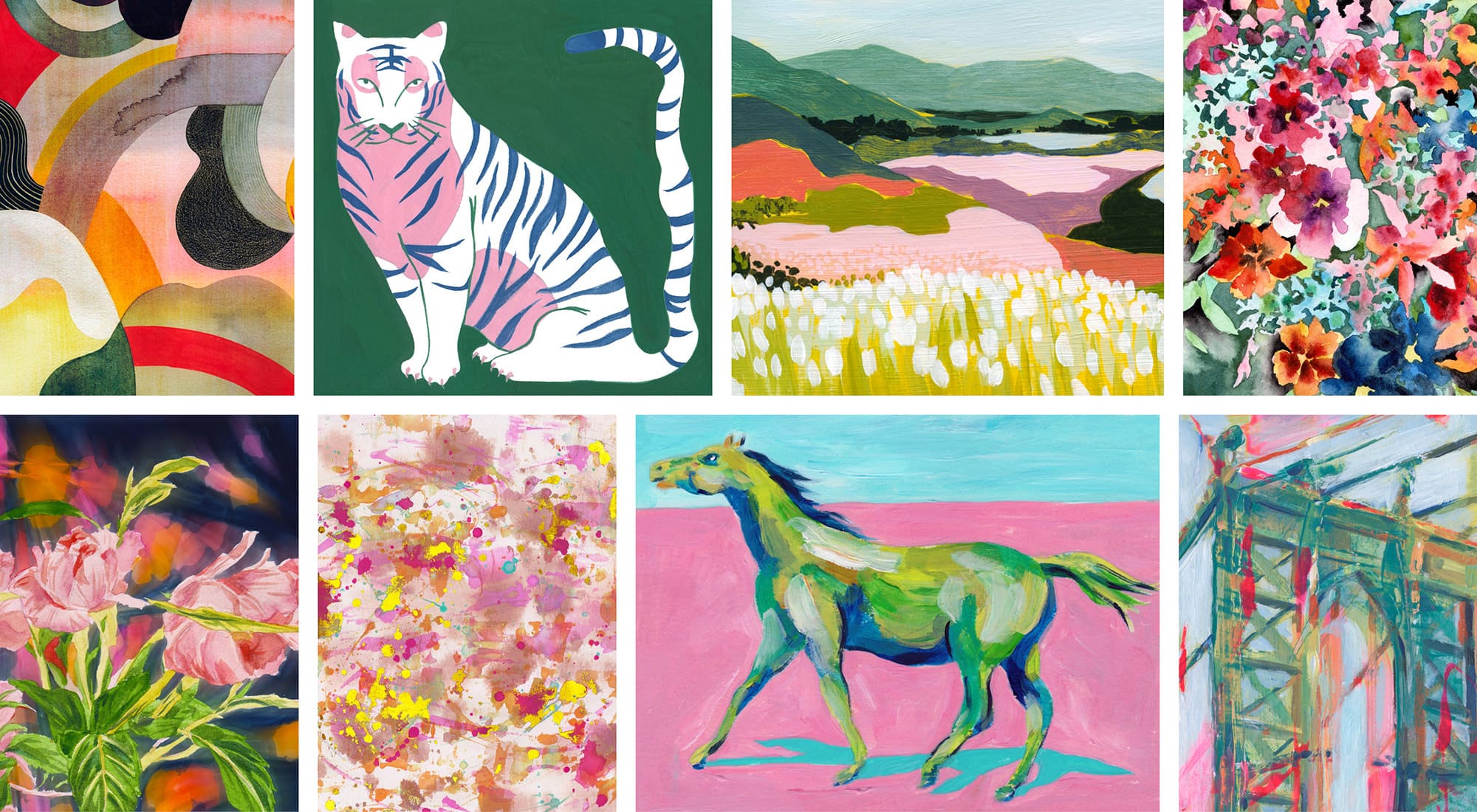
4. Maximalism without the Clutter
With minimalism being known as a staple trend of our era, an interior that prioritizes maximalism is a way to stand out and leave a lasting impression. Bold color choices, rich textures, and layered patterns come together to tell a story inside every room you design.
Through a thoughtful blend of eras, cultures, and materials, contemporary designers gravitate toward home decor that creates eclectic, curated environments. Maximalist interiors succeed when they elicit relatability—a personal feeling, not just clutter. Statement wall art, layered textiles, and sculptural pieces give guests visual interest and an impression that lingers.
The best way to utilize a maximalist aesthetic without the interior feeling “too crowded” is to go beyond simply using bright colors and fun patterns on flat surfaces. We recommend using a color palette, as having visual consistency from room to room is key to keeping cohesion in your design choices. While every room does not have to be the same shade, having variations of the same color is essential. Space your gallery walls as well by picking a measurement that works for your space. Maximalism isn’t simply about clutter; it’s about making sure every room has its own unique personality that still ties in with the rest of the house.
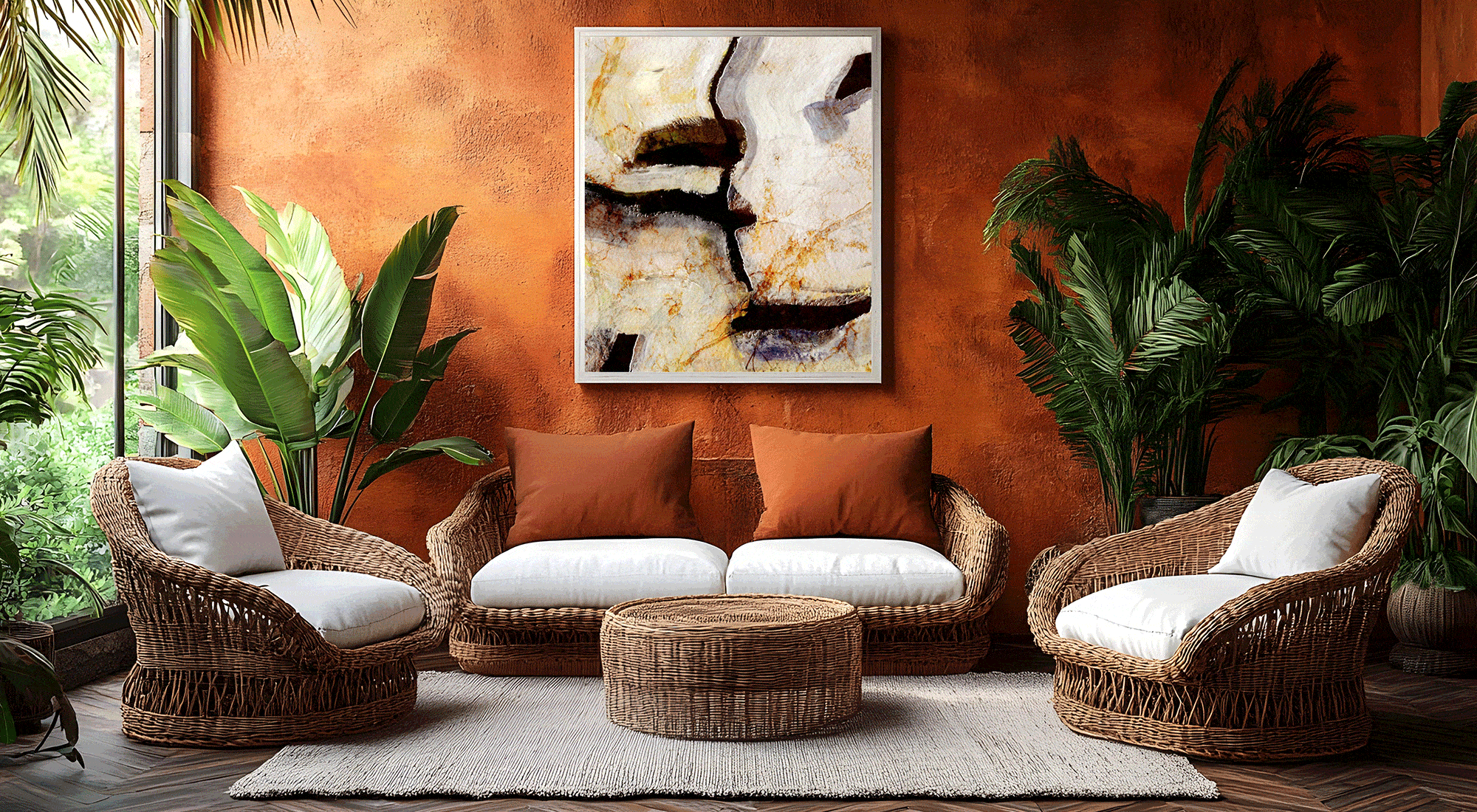
5. Modular and Adaptive Design
With changing guest expectations and evolving use of space (think hybrid lounge-work areas), commercial design interiors are increasingly modular. Lightweight furniture, movable partitions, and flexible wall decor allow venues to adapt for events, seasonal changes, or evolving branding needs.
In 2025, adaptability equals sophistication. Design that allows for change shows innovations and forward thinking. These are two qualities guests and clients notice.
Consider rotating themed wall art or lifestyle installations quarterly to keep your space fresh without major investments.
In Summary
Great hospitality design doesn’t just follow the latest interior design trends; it translates them into experiences. Whether you’re an interior designer sourcing artwork or a procurement lead looking to revamp your hotel’s look, incorporating thoughtful, brand-aligned visuals is essential.
Explore Art Solutions for Hospitality
At Sensaria, we help hospitality brands bring these trends to life through custom-curated canvas photography, large-scale wall art, and flexible artwork collections tailored to your identity. Our work is designed to fit commercial interiors and tell your brand’s story.



